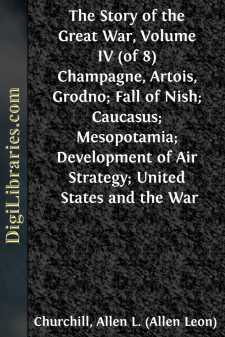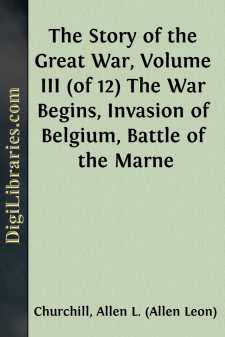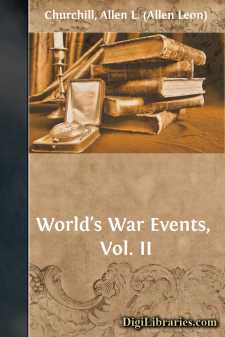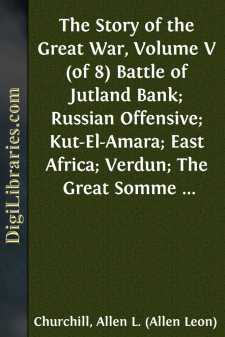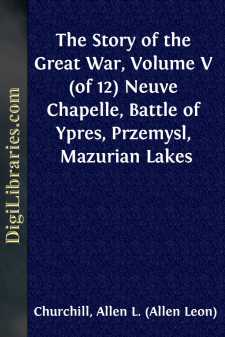Categories
- Antiques & Collectibles 13
- Architecture 36
- Art 48
- Bibles 22
- Biography & Autobiography 813
- Body, Mind & Spirit 142
- Business & Economics 28
- Children's Books 15
- Children's Fiction 12
- Computers 4
- Cooking 94
- Crafts & Hobbies 4
- Drama 346
- Education 46
- Family & Relationships 57
- Fiction 11828
- Games 19
- Gardening 17
- Health & Fitness 34
- History 1377
- House & Home 1
- Humor 147
- Juvenile Fiction 1873
- Juvenile Nonfiction 202
- Language Arts & Disciplines 88
- Law 16
- Literary Collections 686
- Literary Criticism 179
- Mathematics 13
- Medical 41
- Music 40
- Nature 179
- Non-Classifiable 1768
- Performing Arts 7
- Periodicals 1453
- Philosophy 64
- Photography 2
- Poetry 896
- Political Science 203
- Psychology 42
- Reference 154
- Religion 513
- Science 126
- Self-Help 84
- Social Science 81
- Sports & Recreation 34
- Study Aids 3
- Technology & Engineering 59
- Transportation 23
- Travel 463
- True Crime 29
The Story of the Great War, Volume IV (of 8) Champagne, Artois, Grodno; Fall of Nish; Caucasus; Mesopotamia; Development of Air Strategy; United States and the War
Description:
Excerpt
CHAPTER I
RENEWED TURKISH ATTEMPTS
The leaders of the Turkish troops had been hard at work arousing the fanaticism of the Turkish soldiery against the British foe before the next day's battle began. It is due these noisy "Holy Warriors" that sentries of the Fifth Egyptian Field Battery were warned of the near presence of the enemy.
The Indian troops now took the offensive, supported by the warships and mountain and field artillery. The Serapeum garrison, consisting of Ninety-second Punjabis and Rajputs, now cleared its front of the enemy who had been stopped three-quarters of a mile away. A counterattack made by the Sixty-second Punjabis of the Tussum garrison drove the Turks back. Two battalions of the Turkish Twenty-eighth Regiment now joined the fight, but the British artillery threw them into disorder, and by 3 p. m. of February 3, 1915, the Moslems were in retreat, leaving behind them a rear guard of a few hundred men hidden in the gaps among the brush along the eastern bank.
The warships on Lake Timsah had been in action since morning, and the sand hills near Ismailia were at first crowded by civilians and soldiers eager to witness the fight, until the Turkish guns to the east and southeast of the Ferry post drove them in cover.
About 11 a. m. an old unprotected Indian Marine transport, H. M. S. Hardinge, was struck by two 6-inch shells. One carried away the funnel and the other burst inboard doing much damage. Two of the crew were killed and nine wounded. George Carew, the pilot, lost a leg, but continued on duty and helped to bring the injured vessel into Ismailia. The French coast guard battleship Requin came now under the Turkish fire, but her 10.8-inch guns soon silenced the enemy's batteries.
The morning of February 3, 1915, the Turks advanced on the Ismailia Ferry, then held by Sikhs, Punjabi Rifles, a battery of Indian mountain artillery and Australian engineers, digging shelter pits as they moved forward, covered by two field batteries. Their advance was stopped by the British guns when they had come within 1,000 yards of the outpost line. During the afternoon the Turks kept up some desultory firing that was ineffective; they also engaged in some reconnoitering of British positions during the dark night that followed, but when morning broke they had all disappeared.
Meanwhile, at El Kantara the struggle had reached much the same conclusion. The Indian troops had repelled an advance from the south, in which two Turkish regiments, the Eightieth and Eighty-first of the Twenty-seventh Division, were engaged. H.M.S. Swiftsure, which had taken the place of the disabled Hardinge, aided by Indian and Territorial artillery, did effective work in covering the British positions. The nature of the ground here was so marshy that in places the Turks sank to their waists in muddy ooze, and foredoomed their attack to failure. Again it was demonstrated that they are poor strategists and fail to make careful observations of the terrain before advancing to attack....


